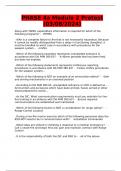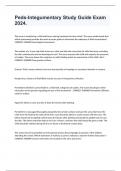1 Toward a Reconciliation of the Definitional Issues in the Field of Corporate
Entrepreneurship................................................................................................................4
1.1 Introduction..................................................................................................................................4
1.2 Existing definitions........................................................................................................................4
1.2.1 Entrepreneurship.....................................................................................................................................4
1.2.2 Corporate Entrepreneurship...................................................................................................................5
1.3 A definitional framework..............................................................................................................5
1.3.1 Entrepreneurship.....................................................................................................................................6
1.3.2 Independent or Corporate entrepreneurship.........................................................................................6
1.3.3 Strategic renewal, Corporate venturing and innovation.........................................................................7
1.3.4 External and Internal Corporate Venturing.............................................................................................7
1.4 A classification of internal ventures..............................................................................................7
1.4.1 Structural autonomy................................................................................................................................8
1.4.2 Degree of relatedness to original organisation.......................................................................................8
1.4.3 Extent of innovation................................................................................................................................8
1.4.4 Nature of sponsorship.............................................................................................................................8
2 A Model of Middle-Level Managers’ Entrepreneurial Behavior.........................................8
2.1 Introduction..................................................................................................................................8
2.1.1 Conceptualizing Corporate Entrepreneurship.........................................................................................8
2.1.2 Conceptualizing the role of middle-level managers...............................................................................8
2.2 Organizational antecedents..........................................................................................................9
2.3 Middle-level managers’ Entrepreneurial behaviour.....................................................................9
2.3.1 Opportunity management.....................................................................................................................10
2.3.1.1 Endorsement.................................................................................................................................................10
2.3.1.2 Refinement....................................................................................................................................................10
2.3.1.3 Sheperding.....................................................................................................................................................10
2.3.2 Resource management..........................................................................................................................10
2.3.2.1 Identification..................................................................................................................................................10
2.3.2.2 Acquisition.....................................................................................................................................................10
2.3.2.3 Deployment...................................................................................................................................................10
2.4 Entrepreneurial outcomes..........................................................................................................10
2.4.1 Individual-level outcomes and consequences......................................................................................11
2.4.1.1 Intrinsic outcomes.........................................................................................................................................11
2.4.1.2 Extrinsic outcomes.........................................................................................................................................11
2.4.2 Organizational-level outcomes and consequences...............................................................................11
2.5 Discussion...................................................................................................................................11
,3 Lecture 1: Introduction...................................................................................................12
3.1 Why study entrepreneurship over innovation?..........................................................................12
3.2 The entrepreneurial paradox......................................................................................................12
3.3 Who is the intrapreneur?...........................................................................................................12
4 Corporate entrepreneurship and strategic management................................................12
4.1 Strategic behaviour and corporate entrepreneurship................................................................13
4.1.1 Induced strategic behaviour..................................................................................................................13
4.1.2 Autonomous strategic behaviour..........................................................................................................14
4.2 Entrepreneurship and organisation............................................................................................14
4.2.1 Opportunities for internal entrepreneurship........................................................................................14
4.2.2 The organisation and a need for entrepreneurship..............................................................................15
4.2.3 Fluctuations in corporate entrepreneurship.........................................................................................15
4.3 Designing and managing entrepreneurial systems.....................................................................16
4.3.1 How CE was traditionally intergrated with strategy.............................................................................16
4.3.1.1 Institutionalizing innovation..........................................................................................................................16
4.3.1.2 Importing the logic of corporate entrepreneurship.......................................................................................16
4.3.2 New ways to intergrate CE with strategy..............................................................................................17
4.3.2.1 Managing an experimentation-and-selection process...................................................................................17
4.3.2.2 Managing the strategic context.....................................................................................................................17
4.3.2.3 Organisation design for corporate entrepreneurship....................................................................................17
5 Clarifying the entrepreneurial orientation construct and linking it to performance........17
5.1 Dimensions of an entrepreneurial orientation...........................................................................18
5.1.1 Autonomy..............................................................................................................................................18
5.1.2 Innovativeness.......................................................................................................................................18
5.1.3 Risk Taking.............................................................................................................................................18
5.1.4 Proactiveness.........................................................................................................................................18
5.1.5 Competitive Aggressiveness..................................................................................................................18
5.2 The entrepreneurial orientation-performance relationship.......................................................18
5.2.1 Identifying key contingencies................................................................................................................19
5.2.2 Measuring firm performance................................................................................................................19
5.2.3 Alternate models...................................................................................................................................20
5.2.3.1 Moderating effect..........................................................................................................................................20
5.2.3.2 Mediating effect............................................................................................................................................20
5.2.3.3 Independent effects.......................................................................................................................................20
5.2.3.4 Interaction effects..........................................................................................................................................20
5.2.4 Entrepreneurial Orientation as Multidimensional: How relationships may differ...............................20
5.2.4.1 Example 1: The organic organisation.............................................................................................................20
5.2.4.2 Example 2: The quick-response strategy........................................................................................................20
6 Promoting entrepreneurship through HR management..................................................21
, 6.1 Organisational HR systems and HR.............................................................................................21
6.2 New themes in HR and CE..........................................................................................................22
6.2.1 How to take care of entrepreneurial behaviour...................................................................................22
6.2.2 How to make employees take risk........................................................................................................22
6.3 Practical implications..................................................................................................................22
7 Increasing quantity without compromising quality.........................................................22
8 An individual-level perspective on intrapreneurship.......................................................23
8.1 Introduction................................................................................................................................23
8.2 Theoretical background..............................................................................................................23
8.2.1 Conceptualizing entrepreneurship within firms....................................................................................23
8.2.2 Intrapreneurship....................................................................................................................................24
8.3 Results........................................................................................................................................24
8.3.1 Theoretical frameworks and perspectives on intrapreneurship...........................................................24
8.3.2 Research streams..................................................................................................................................25
8.3.2.1 Individual-level perspective on intrapreneurship..........................................................................................25
8.3.2.2 An Organisational-level lens on intrapreneurship..........................................................................................26
8.3.2.3 Context orientation in intrapreneurship research.........................................................................................27
8.3.2.4 Outcome lens on intrapreneurship................................................................................................................27
8.3.2.5 Factors promoting intrapreneurship..............................................................................................................27
8.4 Discussion...................................................................................................................................28
8.5 Implications for practice.............................................................................................................28
8.6 Additional notes from the lecture..............................................................................................29
9 Corporate entrepreneurship in a dispersed setting.........................................................29
10 Personal costs and benefits of employee intrapreneurship...........................................30
11 Making things happen: A model of proactive motivation..............................................31
11.1 Proactiveness is goal-driven.....................................................................................................32
11.1.1 Goal generation...................................................................................................................................32
11.1.2 Goal striving.........................................................................................................................................32
11.2 Proactive motivation states......................................................................................................33
11.2.1 ‘Can do’ motivation.............................................................................................................................33
11.2.1.1 Can I do it?...................................................................................................................................................33
11.2.1.2 How feasible is it?........................................................................................................................................33
11.2.1.3 How risky is it?.............................................................................................................................................33
11.2.2 ‘Reason to’ motivation........................................................................................................................33
11.2.3 ‘Energized to’ motivation....................................................................................................................33
11.3 What moderates your motivations...........................................................................................33
12 Cognitive mapping approach to business models..........................................................34
12.1 Why cognitive maps of a business model?...............................................................................34
12.2 How to make a cognitive map of a business model..................................................................35
, 12.3 What a cognitive map tells you.................................................................................................35
13 Cognitive mapping........................................................................................................36
14 Analysing cognitive maps to help structure issues or problems.....................................36
15 Portman case summary................................................................................................38
15.1 The extent to which this case is about intrapreneurship..........................................................38
15.1.1 How much autonomy should you give your employees?...................................................................38
15.1.2 How this case is about induced strategic behaviour...........................................................................38
15.1.3 How this case is about dispersed corporate entrepreneurship..........................................................39
15.2 The role (and in this case lack) of middle-level managers........................................................39
15.3 Identifying and solving team-problems....................................................................................39
15.3.1 Generally identifiable problems with the team..................................................................................39
15.3.2 Participation using framing.................................................................................................................39
15.3.3 Cognitive maps....................................................................................................................................40
15.4 Motivating proactive behaviour...............................................................................................40
15.4.1 Does Scott overestimate the power of intrinsic motivation?.............................................................40
15.4.2 The effect of punishments and rewards in Gawke’s paper.................................................................40
15.4.3 Is the social norm okay?......................................................................................................................41
1 TOWARD A RECONCILIATION OF THE DEFINITIONAL
ISSUES IN THE FIELD OF CORPORATE
ENTREPRENEURSHIP
1.1 INTRODUCTION
Just like the study of the phenomenon itself, entrepreneurship lacks consistent definition across the
increasing number of studies into it. This article synthesizes existing definitions in the context of
corporate entrepreneurship as this domain is most studied.
1.2 EXISTING DEFINITIONS
1.2.1 Entrepreneurship
So, before we are able to give definitions in the context of entrepreneurship, we need to define
entrepreneurship as a concept itself. Two different clusters of thought are defined. The first cluster
of academics define entrepreneurs by (1) specific personal characteristics. The second cluster of
academics define entrepreneurs by (2) their outcomes.
Another way we can see differences in the academic use of the word ‘entrepreneur’ is which big
thinker they follow in their definition. The first group follows Schumpeter who argued that an
entrepreneur is a person that “carries out new combinations, which may take the form of new
products, processes, markets, organizational forms, or sources of supply”. The second group follows
Gartner who is more careful in his definition and tries to define what an entrepreneur does instead
of is. He thus simply states that “entrepreneurship is the creation of organizations”. Both have










